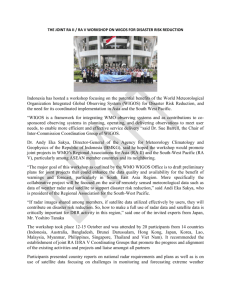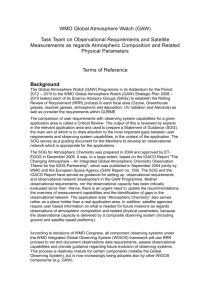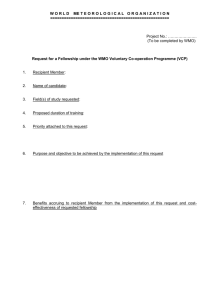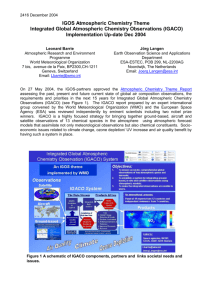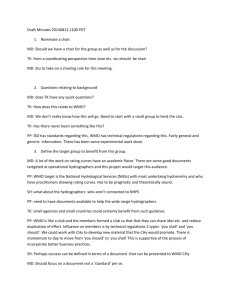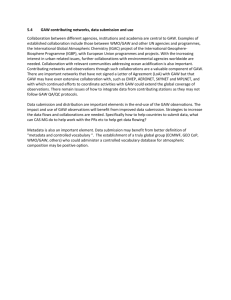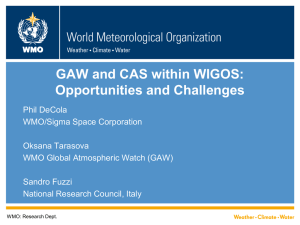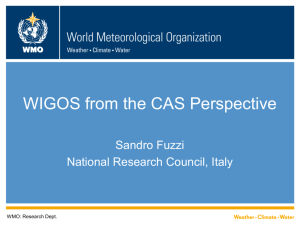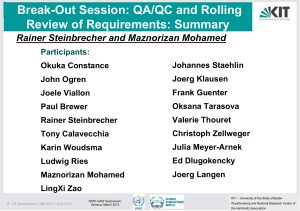doc - WMO
advertisement
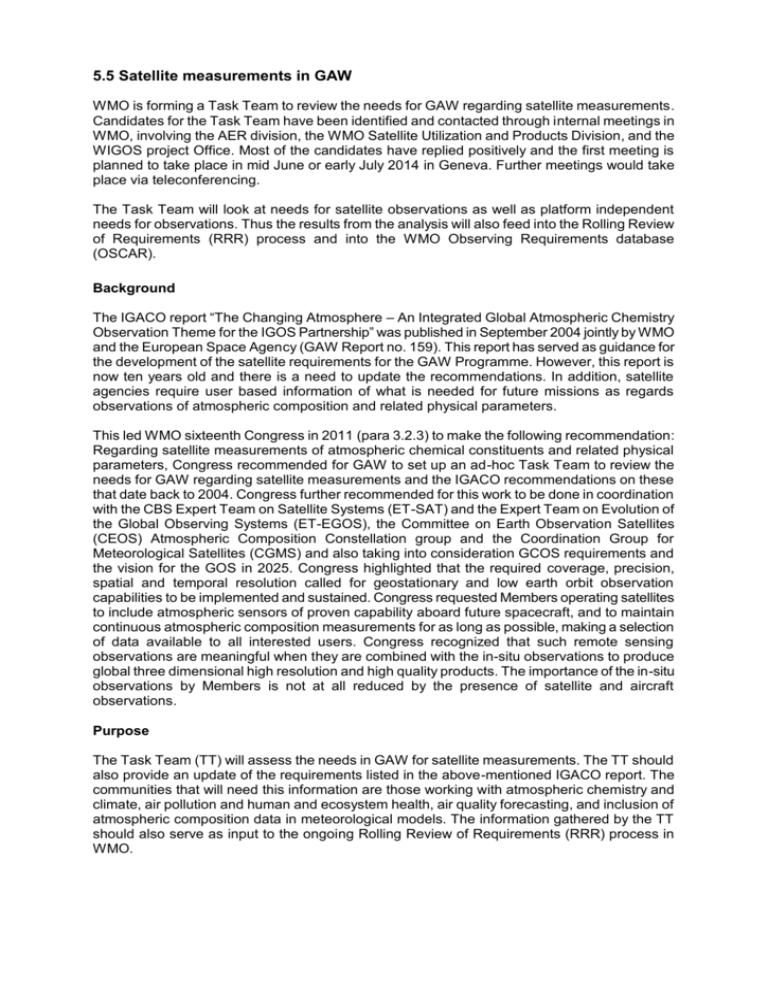
5.5 Satellite measurements in GAW WMO is forming a Task Team to review the needs for GAW regarding satellite measurements. Candidates for the Task Team have been identified and contacted through internal meetings in WMO, involving the AER division, the WMO Satellite Utilization and Products Division, and the WIGOS project Office. Most of the candidates have replied positively and the first meeting is planned to take place in mid June or early July 2014 in Geneva. Further meetings would take place via teleconferencing. The Task Team will look at needs for satellite observations as well as platform independent needs for observations. Thus the results from the analysis will also feed into the Rolling Review of Requirements (RRR) process and into the WMO Observing Requirements database (OSCAR). Background The IGACO report “The Changing Atmosphere – An Integrated Global Atmospheric Chemistry Observation Theme for the IGOS Partnership” was published in September 2004 jointly by WMO and the European Space Agency (GAW Report no. 159). This report has served as guidance for the development of the satellite requirements for the GAW Programme. However, this report is now ten years old and there is a need to update the recommendations. In addition, satellite agencies require user based information of what is needed for future missions as regards observations of atmospheric composition and related physical parameters. This led WMO sixteenth Congress in 2011 (para 3.2.3) to make the following recommendation: Regarding satellite measurements of atmospheric chemical constituents and related physical parameters, Congress recommended for GAW to set up an ad-hoc Task Team to review the needs for GAW regarding satellite measurements and the IGACO recommendations on these that date back to 2004. Congress further recommended for this work to be done in coordination with the CBS Expert Team on Satellite Systems (ET-SAT) and the Expert Team on Evolution of the Global Observing Systems (ET-EGOS), the Committee on Earth Observation Satellites (CEOS) Atmospheric Composition Constellation group and the Coordination Group for Meteorological Satellites (CGMS) and also taking into consideration GCOS requirements and the vision for the GOS in 2025. Congress highlighted that the required coverage, precision, spatial and temporal resolution called for geostationary and low earth orbit observation capabilities to be implemented and sustained. Congress requested Members operating satellites to include atmospheric sensors of proven capability aboard future spacecraft, and to maintain continuous atmospheric composition measurements for as long as possible, making a selection of data available to all interested users. Congress recognized that such remote sensing observations are meaningful when they are combined with the in-situ observations to produce global three dimensional high resolution and high quality products. The importance of the in-situ observations by Members is not at all reduced by the presence of satellite and aircraft observations. Purpose The Task Team (TT) will assess the needs in GAW for satellite measurements. The TT should also provide an update of the requirements listed in the above-mentioned IGACO report. The communities that will need this information are those working with atmospheric chemistry and climate, air pollution and human and ecosystem health, air quality forecasting, and inclusion of atmospheric composition data in meteorological models. The information gathered by the TT should also serve as input to the ongoing Rolling Review of Requirements (RRR) process in WMO. Membership, meetings and reporting The TT will consist of about 10 members including representatives from the GAW user community and the entities mentioned in para 3.2.3 Cg-XVI, and representatives of relevant WMO Programmes, with two co-chairs leading the work. The TT is to meet in person with subsequent work being conducted mainly by email and teleconferencing. The TT will report to the WMO EPAC SSC and will provide input to the work of WIGOS and the WMO Space Programme. The work may proceed in stages, however, major output is expected in time for documentation to the WMO 17th Congress, to be held 25 May to 12 June 2015. Draft Terms of Reference (ToRs) 1. To review the needs for future atmospheric composition, and related physical parameters, observation information derived from satellites, without consideration of instrument specifications; 2. To review current use of available satellite information in this field and how to enhance its use; 3. To consider timelines for the need of delivery of satellite products; 4. To consider needs for collocation of instruments for vertical distribution and surface measurements as relates to satellite observations, for inclusion in models and for satellite validation, especially for high resolution data; 5. To update, or organize for the update of, the Tables and Figures in the IGACO Report that give an overview of key atmospheric constituents to be targeted, an overview of existing and planned platforms and instruments addressing these key constituents and tables with observational requirements; 6. To consider the ongoing work on the WMO Rolling Review of Requirements (RRR) described at: http://www.wmo.int/pages/prog/www/OSY/GOS-RRR.html and the Observing Systems Capabilities Analysis and Review tool (OSCAR), a component of the RRR for recording observational requirements and observing capabilities (both spacebased and surface-based), and conducting critical reviews, please see: http://www.wmo.int/pages/prog/www/OSY/RRR-DB.html

